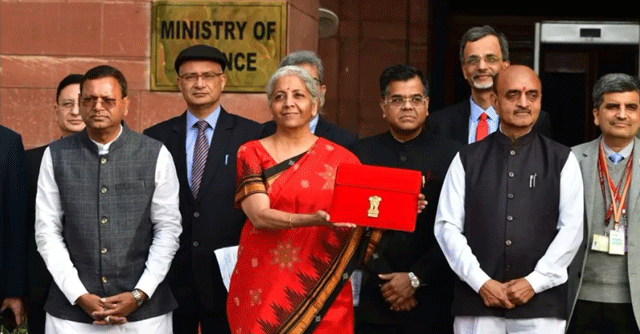
Budget boost for AI; duty cuts may lower large-screen TV prices


In a bid to make India a digital and artificial intelligence (AI) powerhouse, the government plans to set up three Centers of Excellence (CoEs) for artificial intelligence (AI), 100 5G labs in engineering institutions, and 30 Skill India International Centres for coding, AI, robotics, mechatronics, internet of things (IoT), 3D printing, and drones.
To realise “the vision of Make AI in India and Make AI work for India, three centers of excellence for Artificial Intelligence will be set-up in top educational institutions,” the finance minister Nirmala Sitharaman said while presenting the Union Budget on Wednesday. She added that companies will partner with the government “in conducting interdisciplinary research and develop cutting-edge applications and scalable problem solutions in the areas of agriculture, health, and sustainable cities”, a move that “will galvanize an effective AI ecosystem and nurture quality human resources in the field”.
The government has also proposed the introduction of a National Data Governance policy to make anonymized data accessible to startups and researchers. Lack of access to good quality non-personal data to train AI models is a major challenge faced by startups working on AI projects.

The adoption of AI with a data utilization strategy can add $500 billion to India’s GDP by 2025, according to a June 2022 report by Nasscom. “The proposed three Centers of Excellence for AI is a decisive step towards promoting AI and allied technologies in India,” said Ranjan Kumar, CEO of Entropik, an AI startup.
The government of India has been calling for AI adoption and uses subsets of AI such as natural language processing (NLP) in some of its missions such as the Digital India Bhashini portal. It also organises a startup event called the Responsible AI for Social Empowerment (RAISE) to help AI startups showcase their products and raise funds.
Sitharaman also provided relief to the Information Technology (IT) and electronics industry by proposing to halve the customs duty on open cells from 5% to 2.5%, while completely exempting duty on the mobile phone camera lenses from 2.5% and on specific chemicals such as pre-calcined ferrite powder and palladium tetra amine sulphate, on which the duty was 7.5%. Palladium is used in parts of connectors in printed circuit boards (PCBs), which is used in all electronics.

“This is a welcome move, and we will pass this benefit to customers. Television prices can come down up to Rs 3,000 on larger screens (above 50-inch),” said Avneet Singh Marwah, CEO and founder at Super Plastronic Pvt. Ltd, a contract manufacturer of TVs. “This will significantly boost the domestic television manufacturing industry and help compete with global brands,” added Arjun Bajaj, Director of Videotex International, a contract TV manufacturer.
Industry experts believe that the relief on the duty of components will also encourage component manufacturing in India.
Vivek Tyagi, chairman of India Electronics and Semiconductor Association (IESA) points out that until now the focus has been on the assembly of electronics, which creates a value addition of around 7-8% of the total price of a device. “The duty reduction (on components) can increase the value addition for manufacturers by more than double, on a per-device basis. It can thus easily be at least 15-16%, which may make India a viable destination for electronics component manufacturing. This can also attract R&D engineers for engineering design in India,” added Tyagi.

Muralikrishnan B, President of Xiaomi India, also concurred that a reduction in duty on select components will help increase domestic value addition. “This will have a positive impact on the domestic component manufacturing industry,” he added.
Not all agree that device prices will be cut. “These steps will have no significant impact on the final product price but are generally in the right direction. The cost impact on mobile phone’s Bill of Material (BoM) will be 0.16% to 0.19%,” said Pankaj Mohindroo, chairman, India Cellular and Electronics Association (ICEA).
The budget has also proposed to do away with the minimum threshold of Rs 10,000 for levying TDS on winnings from online gaming. This means TDS will be charged even if the winning is under Rs 10,000.

